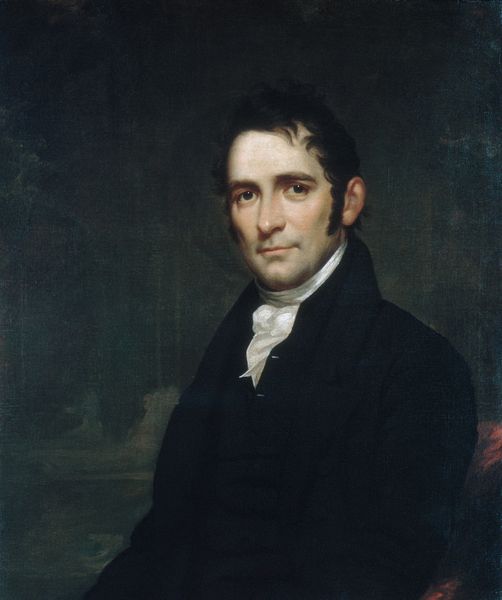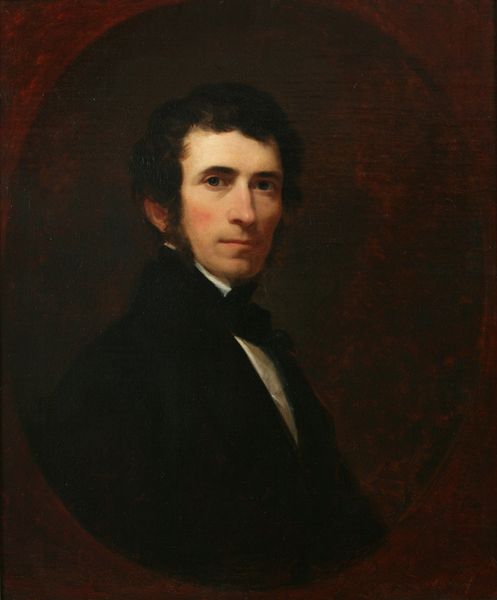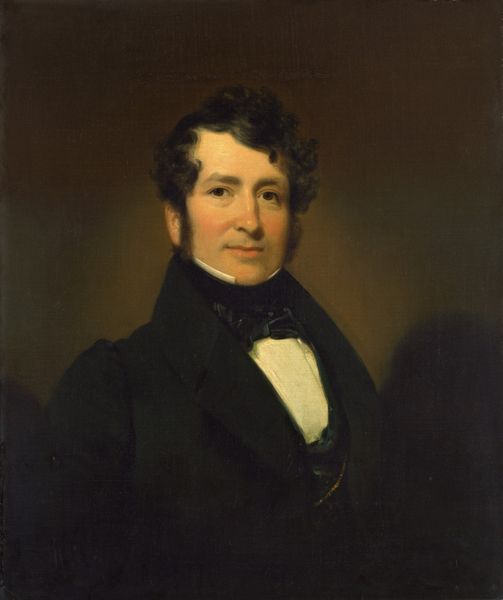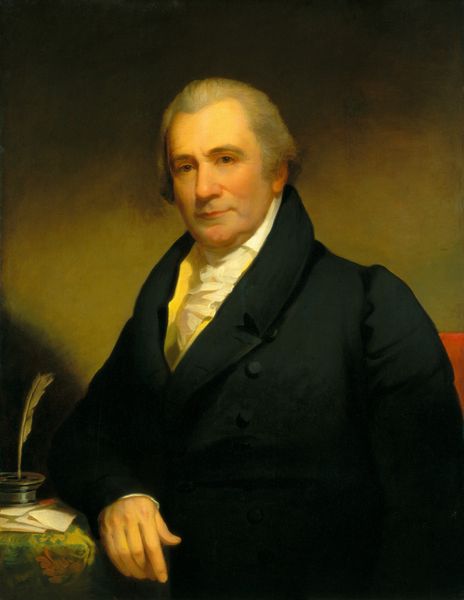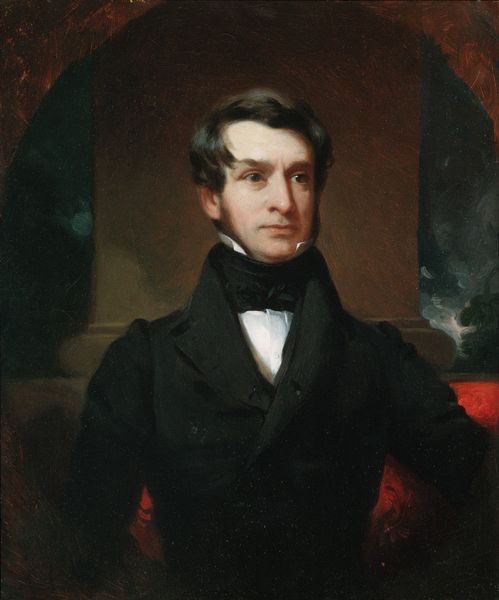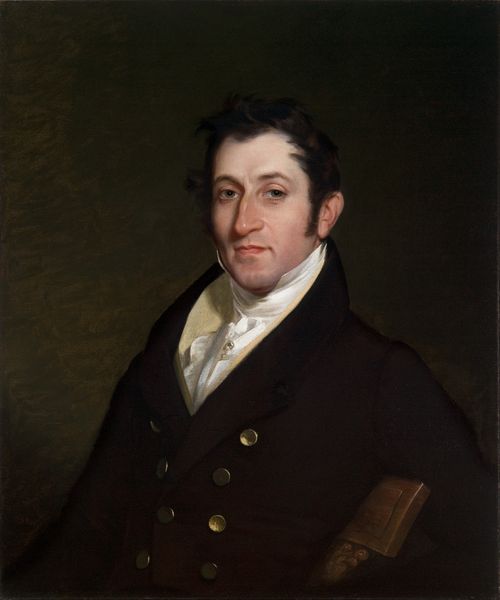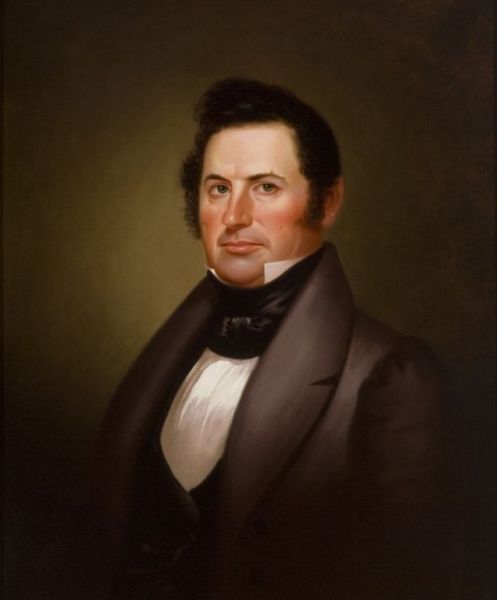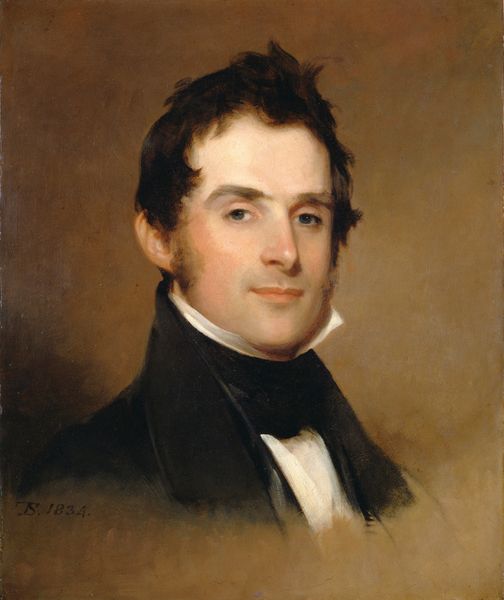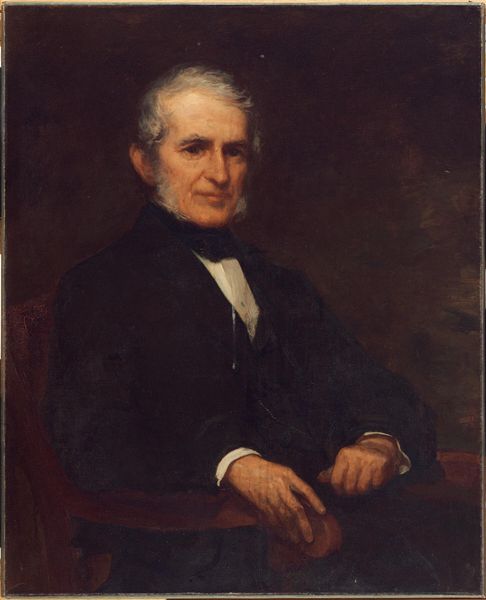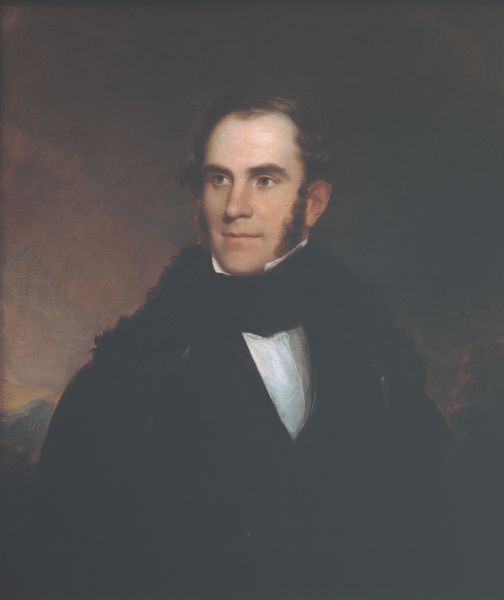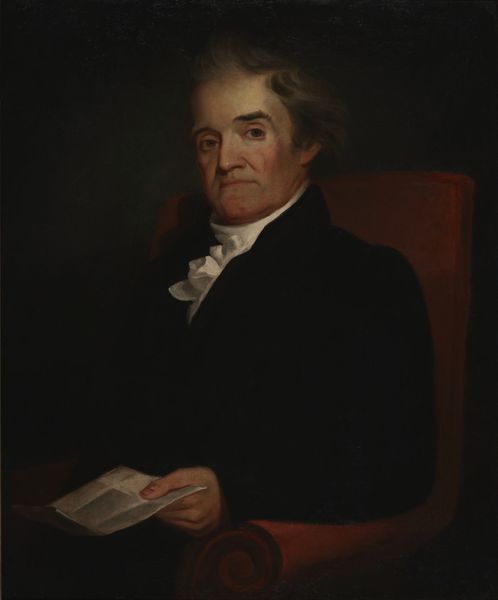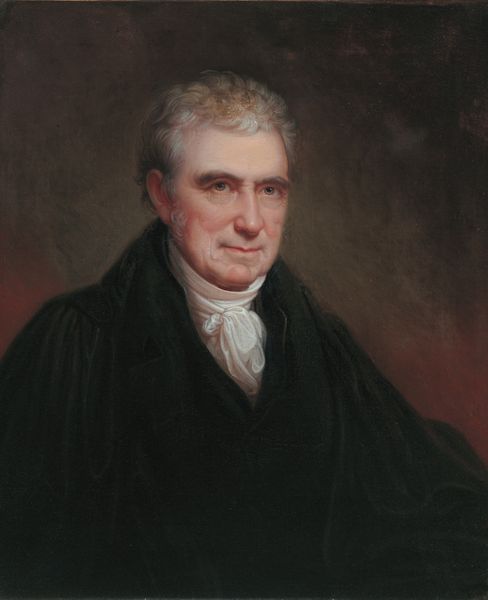
painting
#
portrait image
#
painting
#
portrait subject
#
portrait reference
#
portrait head and shoulder
#
hudson-river-school
#
portrait drawing
#
facial portrait
#
portrait art
#
fine art portrait
#
realism
#
celebrity portrait
#
digital portrait
Copyright: Public domain
Editor: This is Asher Brown Durand's "Portrait of Luman Reed," a painting residing here at the Met. There’s a striking stillness to it. The man’s dark coat really dominates the canvas, but his face has so much character. What stands out to you when you look at this portrait? Curator: The Hudson River School is usually celebrated for landscapes, but here, we see Durand applying his skills to portraiture. But even in depicting a man, we must consider the material conditions of its making. Note the dark colors, reflecting the dyes and pigments available, likely derived from natural sources subject to the constraints of geography and trade. Consider how the artist's labor itself was commodified and fits into the burgeoning market for art in that era. Editor: So you’re saying that the very materials available and how the artist used them speaks to the context of the time? Curator: Precisely! And the brushstrokes, almost invisible, speak to a desire for realism but also to the level of craft expected in a portrait for a wealthy patron like Reed. The canvas itself, the weave and texture, tells a story of production, from flax field to artist's easel. The scale suggests it would have likely been displayed in a domestic space, acting as a statement of Reed's personal affluence and social standing. Editor: I never considered how the simple act of making a painting could reveal so much about society and economics. Thanks! Curator: Seeing art this way pushes us to think about art's role beyond just aesthetics and genius, toward something embedded in daily life. It opens up new possibilities for understanding cultural history.
Comments
No comments
Be the first to comment and join the conversation on the ultimate creative platform.
